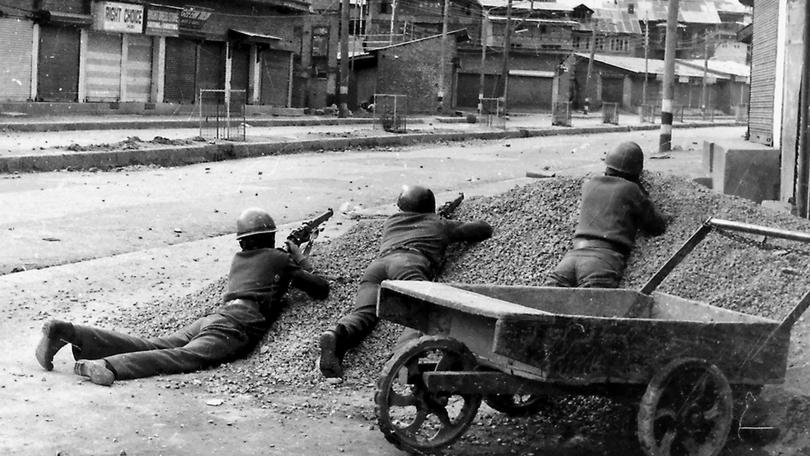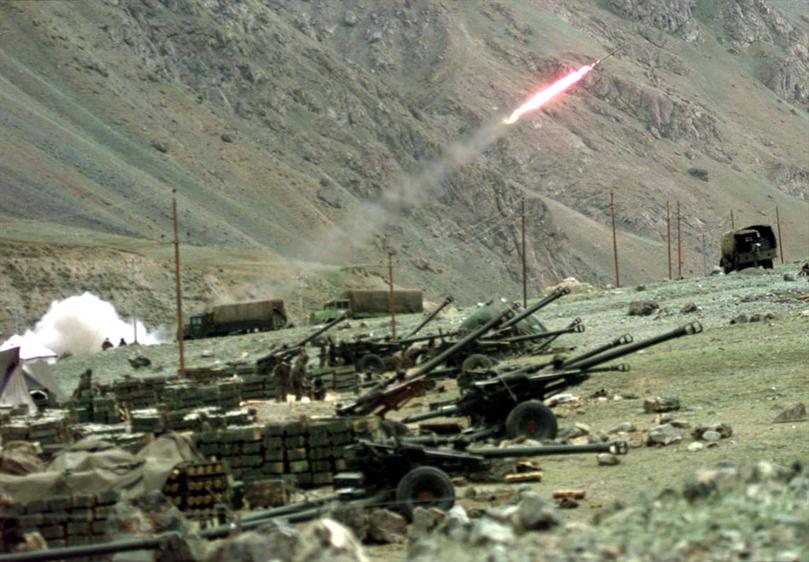India and Pakistan crisis: History of conflict between nuclear powers

India struck multiple sites inside Pakistani controlled territory early Wednesday, two weeks after a deadly attack on tourists in the disputed Kashmir plunged relations between the neighbours to new lows.
India accused Pakistan of backing the massacre, in which 26 men, mostly Indian Hindus, were killed, a charge Pakistan denies.
Soldiers on each side have exchanged fire along their de facto border since the killings, with each blaming the other for shooting first. Both countries expelled diplomats and citizens, ordered the border shut and closed their airspace for each other.
Sign up to The Nightly's newsletters.
Get the first look at the digital newspaper, curated daily stories and breaking headlines delivered to your inbox.
By continuing you agree to our Terms and Privacy Policy.Here’s a look at multiple conflicts between the two countries since their bloody partition in 1947:
1947 — Months after British India is partitioned into a predominantly Hindu India and a Muslim-majority Pakistan, the two young nations fight their first war over control of Muslim-majority Kashmir, then a kingdom ruled by a Hindu monarch. The first war between India and Pakistan killed thousands before ending in 1948.
1949 — A UN-brokered ceasefire line leaves Kashmir divided between India and Pakistan, with the promise of a UN-sponsored vote that would enable the region’s people to decide whether to be part Pakistan or India. That vote has never been held.
1965 — The rivals fight their second war over Kashmir. Thousands are killed in inconclusive fighting before another ceasefire is brokered by the Soviet Union and the United States. Negotiations in Tashkent run until January 1966, ending in both sides giving back territories they seized during the war and withdrawing their armies.
1971 — India intervenes in a war over the independence of East Pakistan, which ends with the territory breaking away as the new country of Bangladesh. An estimated 3 million people are killed in the conflict.
1972 — India and Pakistan sign a peace accord, renaming the ceasefire line in Kashmir as the Line of Control. Under the agreement, each nation would retain the section of Kashmir that it had already held for more than two decades. Both sides deploy more troops along the frontier, turning it into a heavily fortified stretch of military outposts.
1989 — During a period of intense political turmoil sparked by disputed local election results, Kashmiri dissidents, with support from Pakistan, launch a bloody rebellion against Indian rule. Indian troops respond with brutal measures, intensifying diplomatic and military skirmishes between New Delhi and Islamabad.
1999 — Just three months after Pakistan’s prime minister Nawaz Sharif hosted his Indian counterpart Atal Bihari Vajpayee in a goodwill gesture aimed at securing peace, both nations would be fighting over Kashmir once again.
Pakistani soldiers and Kashmiri fighters seized several Himalayan peaks on the Indian side. India would respond with aerial bombardments and artillery.

At least 1,000 combatants are killed over 10 weeks, and a worried world fears the fighting could escalate to nuclear conflict. The US eventually steps in to mediate, with the fighting eventually ending with Mr Sharif urging the withdrawal of the infiltrators. He would be ousted months later in a military coup by the Pakistani general behind the military incursion into Kashmir.
2016 — Militants sneak into an army base in Indian-controlled Kashmir, killing at least 18 soldiers. India responds by sending special forces inside Pakistani-held territory, later claiming to have killed multiple suspected rebels in “surgical strikes.” Pakistan denies that the strikes took place, but it leads to days of major border skirmishes. Combatants and civilians on both sides are killed.
2019 — The two sides again come close to war after a Kashmiri insurgent rams an explosive-laden car into a bus carrying Indian soldiers, killing 40. India carries out airstrikes in Pakistani territory and claims to have struck a militant training facility. Pakistan later shoots down an Indian warplane and captures a pilot. He is later released, deescalating tensions.
2025 — Militants attack Indian tourists in the region’s resort town of Pahalgam and kill 26 men, most of them Hindus. India blames Pakistan, which denies it. India vows revenge on the attackers as tensions rise to their highest point since 2019. Both countries cancel visas for each other’s citizens, recall diplomats, shut their only land border crossing and close their airspaces to each other. New Delhi also suspends a crucial water-sharing treaty.
